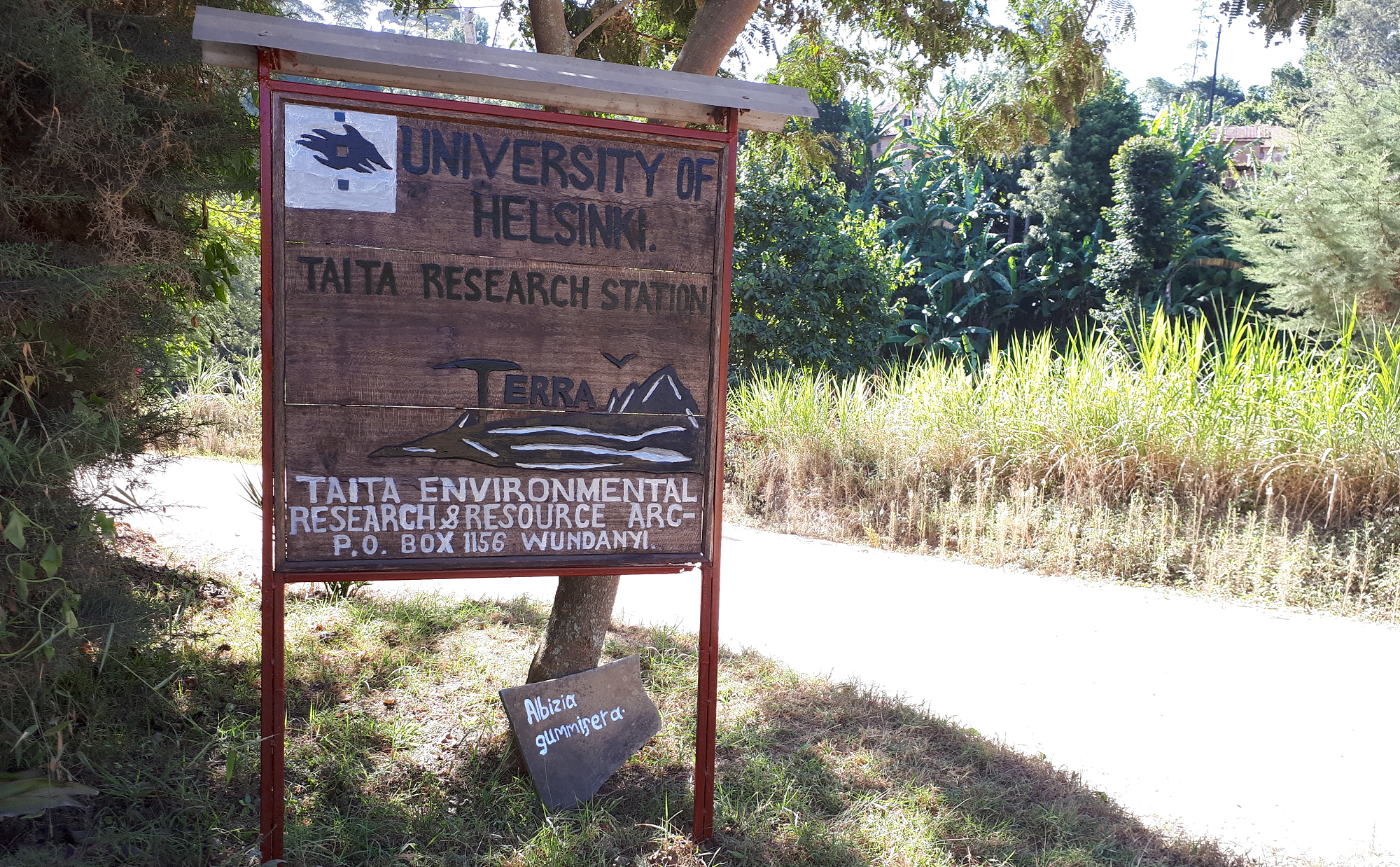The first day at the station we spent by getting to know with Wundanyi and the station area, and by visiting some local officials and local people.
The day started by walking (after delicious breakfast at the station) to the Taita forest service office, which is located quite near the station. However we managed to be late from the appointment because of all the interesting fauna and flora on the way (obviously we had to stop several times to take pictures and listen to interesting lectures about them). At the forest service office the assistant county forest coordinator told us about the forest management in the Taita region. We learned a lot about the situation of the regional forests, waters and soil and for example what kind of effect exotic species and climate change has to them.
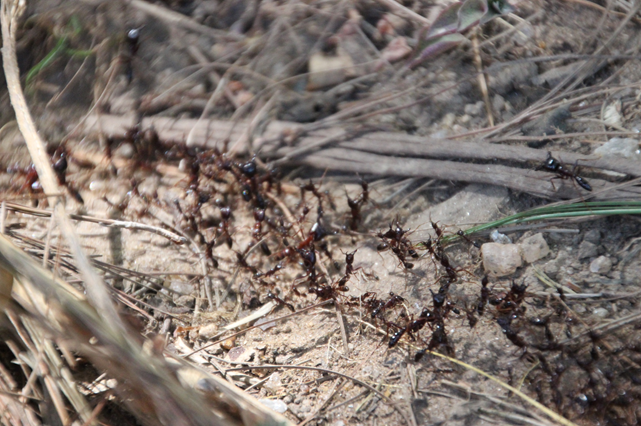
After that we continued to meet the Taita subcounty commissioner, Francis K Kazungu to deliver some research permission papers and at the same time we got a short and informative lesson about the governance systems in Kenya.
Next we visited a non-governmental organization, Taita Taveta wildlife forum and Dawson Nyumba, from whom we learned more about the local trees, plants and farmers. We were told that some of the main problems are the reduced water resources and loss of biodiversity. The organization trying to get the farmers to plant indigenous trees and plants, but are facing a lot of problems convincing the farmers of the long term profits of using them. Mostly because the farmers need short term economical profit to feed themselves and their families. Focusing to this important and interesting lecture was however partly difficult because of the cute and curious monkeys on the nearby trees watching us and occasionally throwing some small sticks and half eaten fruits at us (mostly at Petra).

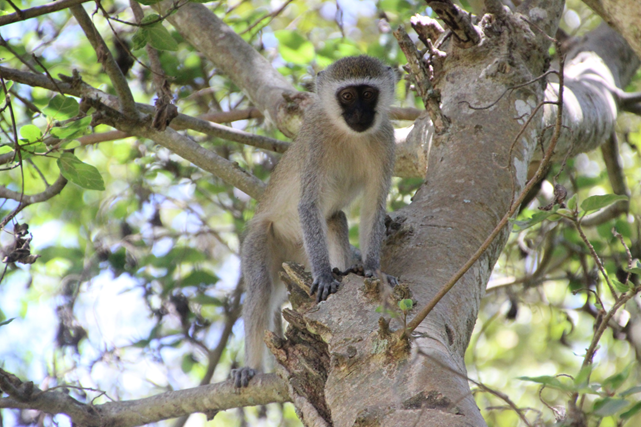
After meeting with the officials and forest management people, we moved to see actual farm and plantations at our stations research assistan Darius’ farm. Darius introduced us to his home and family and gave us a interesting tour around his plantations. The relatively small farm consists of a few cows, chickens and variety of trees and edible plants from bananas to eggplants on several terraces of crops. From the dung of the cows he produces biogas to cooking and the residual is used as fertilizer for the crops.
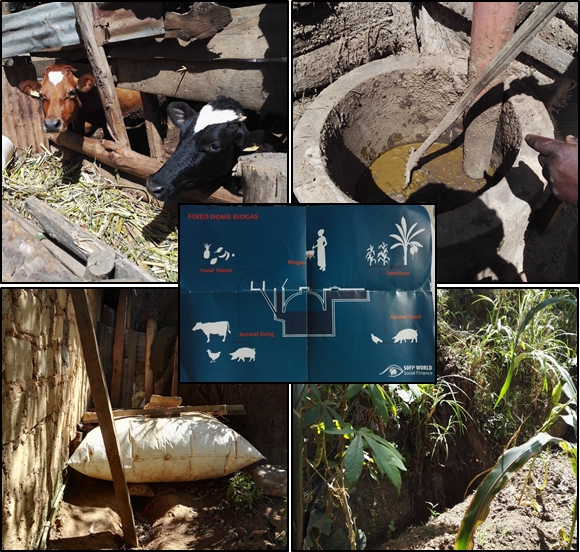
Later we got familiar with the Wundanyi center and markets and also with the proposed botanical garden area next to the research station. After eating a well deserved dinner at the station we got to use the great sauna of the station (build by a finnish taxidermist/sauna building expert at Kenya).
The day was full of plans and a lot of new information to process, but still we found (made) time to explore and wonder the surrounding nature and environment. From time to time it was hard to concentrate on the on going lectures and topics with so much disturbance and interesting activites around us (e.g. monkeys hopping behind the lecturer and throwing stuff at us, numerous birds flying around…). All and all everything has been great, locals and the station staff have been extremely nice and we have already learned so much on our first day at the Taita Hills!
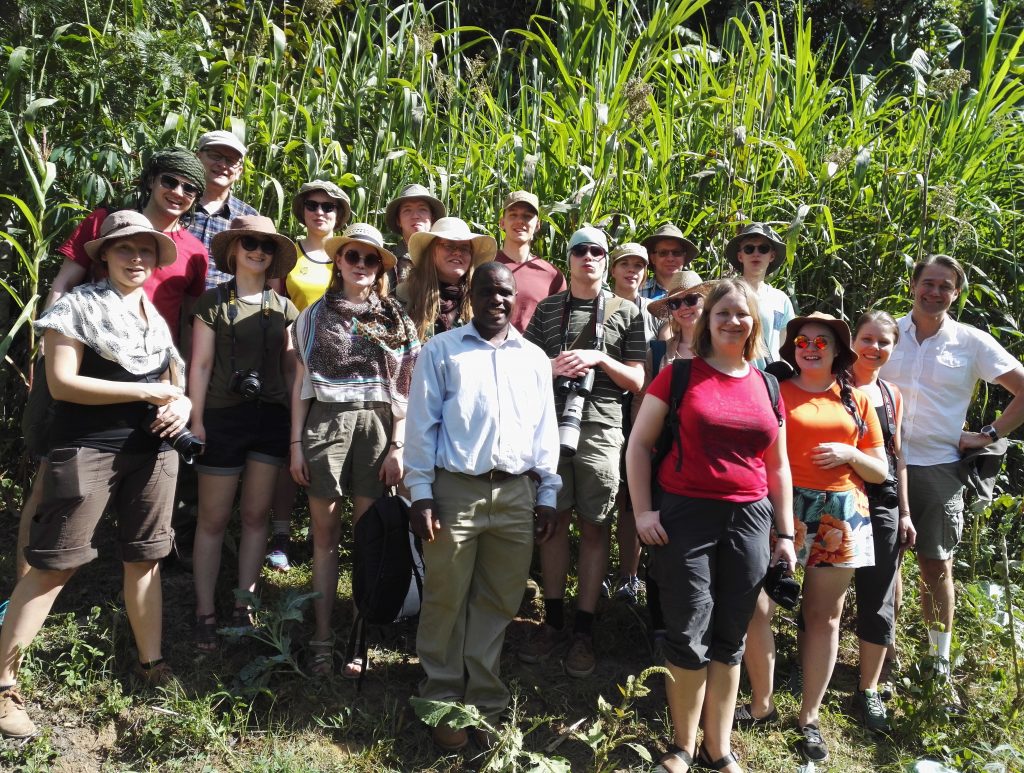
Niklas & Hanna
